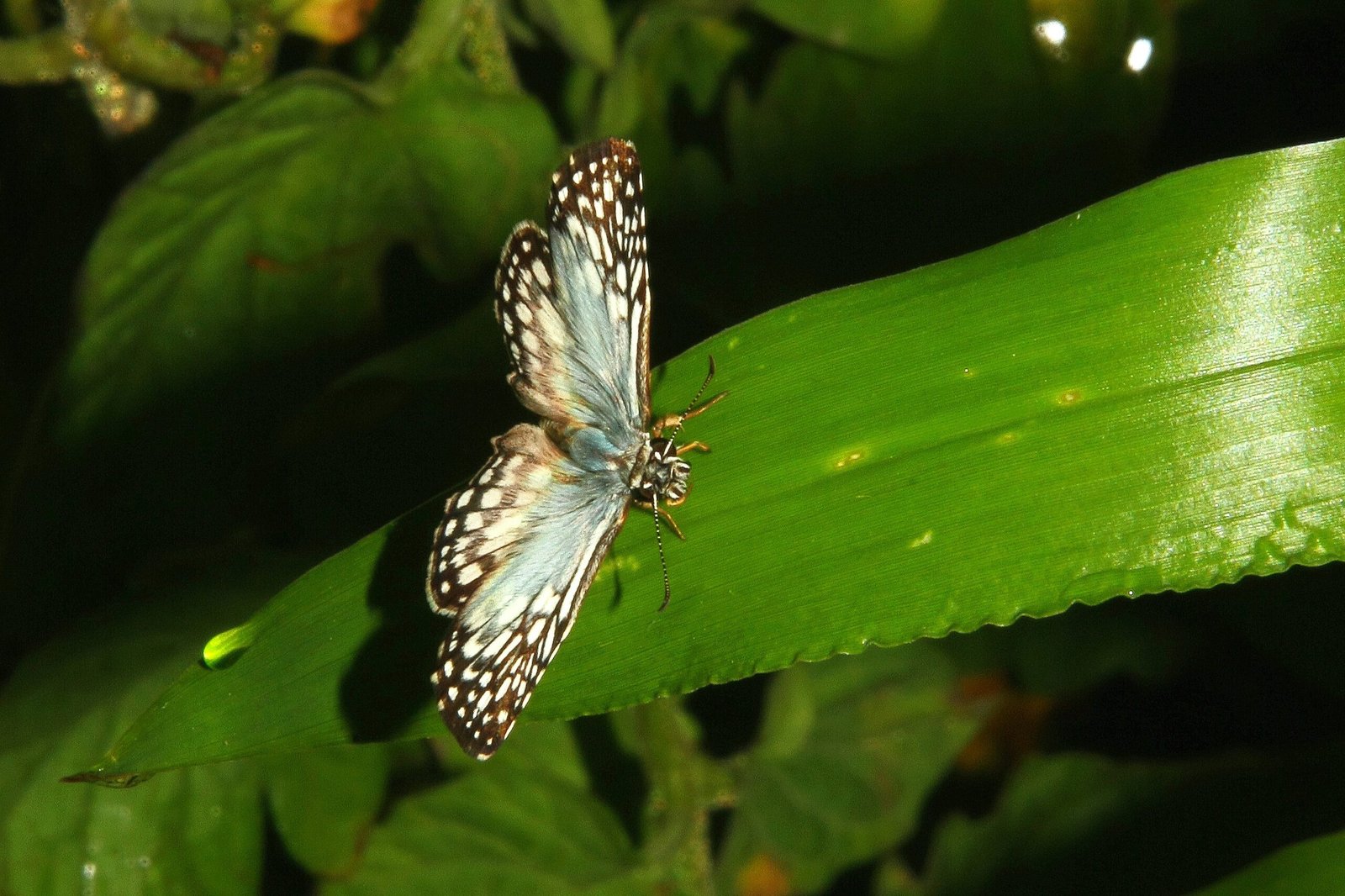Introduction to Butterfly Sensory Perception
Butterflies are remarkable creatures that display extraordinary sensory capabilities, which are essential for their survival in the natural world. One of the most fascinating aspects of a butterfly’s biology is its unique method of tasting—through its feet. This sensory adaptation plays a critical role in how butterflies locate food sources and potential mates, making them adept at navigating their environment.
The ability to taste with their feet is a sophisticated evolutionary trait that allows butterflies to identify suitable plants for laying eggs and feeding. When a butterfly lands on a plant, its feet have taste receptors that can detect specific chemical compounds present in the leaves. This process is crucial, as it helps butterflies recognize plants that are not only nutritious but also safe for their offspring. Such direct interaction with their surroundings enhances their chances of survival, as they can avoid toxic plants that may harm them or their larvae.
Furthermore, the sensory perception of butterflies extends beyond just taste; it also encompasses sight and smell, which are integral to their mating rituals and foraging behaviors. Butterflies possess large, compound eyes that allow them to see a broad spectrum of colors, making it easier for them to find mates and identify flowers rich in nectar. Similarly, olfactory receptors help them detect pheromones released by potential partners, facilitating communication and successful mating.
Understanding these unique sensory mechanisms not only highlights the complexity of butterfly physiology but also underscores their importance in the ecosystem. By playing various roles, such as pollinators and indicators of environmental health, butterflies exemplify the intricate connections among species in nature. Their remarkable sensory perception capabilities truly make them one of the most intriguing members of the insect world.
The Anatomy of Butterfly Feet
Butterflies possess a fascinating anatomy, particularly in their feet, which plays an essential role in their feeding behavior. Unlike many other animals, butterflies utilize specialized sensory receptors located on their feet to taste food sources, a unique adaptation that enhances their foraging efficiency. These receptors are known as chemoreceptors, which detect various chemical signals from potential food sources, aiding in the identification of suitable plants for laying eggs or feeding.
One notable structure found on butterfly feet is the spiny pads, which are covered with tiny, hair-like structures called setae. These structures increase the surface area of the foot, allowing for greater contact with the substrate and improving the butterfly’s ability to sense chemical cues. Each of these setae is equipped with chemoreceptor cells, allowing butterflies to receive immediate feedback on the palatability of the surfaces they land on. This adaptation proves crucial for their survival, as it enables butterflies to select appropriate host plants that will provide nourishment for themselves and their future larvae.
Furthermore, the feet of butterflies are typically equipped with a specialized clinging mechanism, enabling them to securely grasp various surfaces while they feed. This mechanism consists of adhesive pads that help butterflies maintain their position even on smooth leaves or flower petals. The combination of these adaptations not only supports their unique feeding strategy but also enhances their overall ability to thrive in diverse environments.
Overall, the intricate design of butterfly feet illustrates the remarkable adaptations that have evolved over time. By allowing butterflies to taste with their feet, these anatomical features facilitate an efficient feeding process that is crucial for their lifecycle. The relationship between their sensory anatomy and feeding behavior highlights the complexity of butterfly physiology and its various evolutionary advantages.
How Butterflies Use Their Feet to Taste
Butterflies possess a unique and intriguing method of tasting that is fundamentally different from most other animals. Upon landing on a potential food source, typically a flower or a plant, butterflies utilize specialized sensory receptors located on their feet to sample the chemical composition of the surface. This remarkable adaptation allows them to assess the suitability of the plant for feeding or oviposition.
The process begins when a butterfly alights on a plant. Rather than relying solely on their mouthparts to sense the food, they use their feet to detect specific chemical cues released by the plant’s surface. These chemical signals, known as tastants, provide crucial information regarding the plant’s nutritional value and safety. The butterfly’s feet are equipped with chemoreceptors, which are sensitive to various chemical compounds. When these receptors come into contact with the tastants, they send signals to the butterfly’s nervous system, enabling it to identify whether the plant is a suitable source of food.
This unique tasting method is particularly advantageous during feeding or while searching for an appropriate place to lay eggs. By sampling several plants, butterflies can efficiently discern which ones offer the best resources for their larvae or themselves, thus increasing their odds of survival and reproduction. Interestingly, this ability isn’t solely about food; the chemical information gleaned from a plant enables butterflies to avoid toxic or harmful species, showcasing their evolutionary sophistication.
In summary, butterflies’ ability to taste with their feet not only highlights their adaptability in the natural world but also underscores the intricate relationships between insects and plants. Through this specialized sensory system, butterflies can effectively navigate their environment, ensuring their dietary and reproductive needs are met.
The Significance of Tasting with Feet
Butterflies possess a unique ability to taste with their feet, a skill that holds significant advantages in their ecological interactions and life cycle. This method of sensory perception allows butterflies to detect suitable host plants for feeding and oviposition, ensuring the survival of their species. When a butterfly lands on a plant, sensory receptors located on their tarsi (the foot segments) can identify specific chemical compounds found in the plant’s surface. Through this sampling process, butterflies assess the suitability of a plant before engaging in feeding or laying eggs.
The significance of this adaptation lies primarily in its influence on reproduction. Female butterflies utilize their ability to taste with their feet to select the best plants for laying their eggs. These plants are not only crucial as food sources for the caterpillars once they hatch but also play a critical role in the caterpillars’ growth and survival. By choosing the correct host plants, females ensure that their offspring have immediate access to essential nutrients, increasing the chances of their survival.
In addition to its reproductive benefits, the tasting ability of butterflies carries ecological implications, particularly concerning plant-pollinator interactions. As butterflies feed and interact with various flora, they inadvertently contribute to pollination processes. Through the act of tasting and feeding, they transfer pollen between flowers, facilitating plant reproduction. This symbiotic relationship not only benefits the plants but also supports the overall health of ecosystems. Consequently, butterflies play a crucial role in maintaining biodiversity, as their feeding habits directly contribute to the reproductive success of many flowering plants.
In effect, tasting with their feet serves multiple functions for butterflies, impacting their feeding strategies, reproductive choices, and ecological roles. By understanding this fascinating behavior, we can appreciate the intricate connections within ecosystems and the critical roles butterflies fulfill.
Comparison with Other Insects
Butterflies are not the only insects that possess the unique ability to taste with their feet. In fact, several other species, including bees and certain ants, also utilize their tarsi for the purpose of nutrient detection. This fascinating adaptation signifies a broader evolutionary strategy among various insect groups, allowing them to efficiently locate and consume food sources.
Bees, for example, prominently feature sensory receptors on their feet, which enables them to determine the quality of flowers before landing. This capability is crucial as it helps them assess whether a flower will provide the nectar necessary for their survival and hive productivity. Like butterflies, bees employ a chemoreception process, relying on chemical signals to inform their feeding habits. This behavioral overlap underlines a common evolutionary trait among pollinators aimed at maximizing foraging efficiency.
Similarly, some species of ants exhibit comparable tasting abilities. For instance, leafcutter ants can evaluate the palatability of vegetation by utilizing their tarsi. They are particularly adept at detecting plants that may be optimal for their fungal farming, which is central to their nutritional needs. The presence of taste receptors on their feet aids in this process, allowing them to make informed decisions about their foraging practices. Notably, while all these insects share the commonality of tasting with their feet, variations exist in how this mechanism influences their foraging behavior and dietary preferences.
In comparison to butterflies, the sensory mechanisms present in bees and ants highlight the diverse evolutionary adaptations that enable different insects to thrive in their respective ecological niches. While butterflies primarily utilize their feet for tasting flower nectar to feed, other insects similarly employ this multisensory approach to enhance their survival strategies. Understanding these similarities and differences provides a deeper insight into the evolution of taste mechanisms in insects and their various adaptations to environmental challenges.
Myth Busting: Common Misconceptions About Butterfly Taste
Butterflies are often enveloped in a shroud of myths and misconceptions that can distort our understanding of their fascinating feeding habits. One prevalent myth suggests that butterflies exclusively feed on flower nectar. While it is true that nectar comprises a significant portion of their diet, butterflies also derive sustenance from a variety of other sources, including tree sap, rotting fruit, and even animal dung. This diverse diet is crucial for their survival, especially during different life stages and environmental conditions.
Another common misperception is that butterflies have taste buds located solely in their mouths. In reality, butterflies have taste receptors on their feet, allowing them to taste food before they consume it. When a butterfly lands on a potential food source, it taps its feet to detect chemical signals that indicate whether the substance is palatable or nutritious. This adaptation underscores the complexity of their feeding strategy, revealing that butterflies are much more discerning eaters than many may realize.
Moreover, some people believe that butterflies exclusively rely on sweet substances. While it’s undeniable that they are attracted to sugary fluids that provide energy, many species are also drawn to minerals and nutrients found in mud puddles or even on waste. This behavior, known as puddling, provides essential nutrients that are often lacking in nectar, such as sodium and amino acids. This vital knowledge expands our understanding of butterfly feeding habits and highlights their nutritional needs.
In addition, there are misconceptions regarding their sensory abilities. While butterflies are known for their vibrant colors, an interesting fact is that they also utilize chemical and tactile methods to locate food. Their ability to taste with their feet exemplifies the remarkable adaptations they have developed for survival. Discrediting these myths helps us appreciate the complexity of butterfly behavior and the ecological roles they play.
The Role of Environment in Butterfly Taste Perception
The taste perception of butterflies is significantly influenced by environmental factors that affect their behavior and feeding choices. Among these factors, temperature plays a crucial role in determining a butterfly’s activity level and its ability to detect chemical cues from potential food sources. Butterflies are ectothermic organisms, meaning their body temperature is reliant on the surrounding environment. Warmer temperatures can enhance chemical reactions in the sensory receptors located in their feet, leading to improved taste detection capabilities. Conversely, in cooler environments, butterflies may exhibit reduced foraging activity due to slower metabolism and diminished sensitivity to tastes.
Humidity also has a profound impact on the taste perception of butterflies. Elevated humidity levels can enhance the solubility of chemical compounds, thus making it easier for butterflies to detect and evaluate food sources through their feet. This change is especially relevant in environments where nectar and plant exudates become more accessible. Under conditions of low humidity, the evaporation of volatiles may occur more rapidly, which could negatively influence a butterfly’s ability to locate food based on olfactory and gustatory cues.
Moreover, the habitat in which butterflies reside can significantly shape their feeding strategies and taste preferences. Diverse ecosystems provide a rich variety of plants, each with distinct chemical profiles. Butterflies often adapt their taste perception to select food sources that are most beneficial for their survival and reproductive success. For example, the presence of specific flowering plants that provide essential nutrients can alter the feeding behaviors of butterflies. Thus, understanding the interplay between environmental factors and butterfly taste perception is essential for conservation efforts, especially in the face of changing climate conditions that could disrupt their ecological dynamics.
Fun Facts About Butterfly Feet and Tasting
Butterflies are remarkable creatures, not only for their vibrant colors and delicate wings but also for their unique abilities. One of the most fascinating aspects of butterflies is how they taste, which is done primarily through their feet. This peculiar adaptation allows butterflies to quickly assess the suitability of potential food sources and optimal environments for laying eggs. When a butterfly lands on a plant, it uses sensory receptors located in its feet to detect chemical signals that indicate whether the plant is nutritious and suitable for their larvae.
Interestingly, the sensory receptors in butterfly feet are highly specialized. Each receptor can detect a variety of chemicals, providing critical information regarding the plant’s suitability. This means that butterflies can determine not just what they can eat, but also find the ideal plants for laying their eggs, ensuring that their young have access to the best food options. This method of tasting might sound strange, but it showcases a level of efficiency that has evolved over millions of years.
Moreover, butterfly feet play a role in their ability to blend into their surroundings. Many species have evolved colors and patterns on their legs that help them camouflage when resting on leaves. This camouflage assists in evading predators, contributing to their survival. The unique structural features of butterfly feet, which often include tiny scales and hairs, enhance their ability to cling onto surfaces and effectively navigate their environments.
In addition to their tasting roles, butterfly feet are also crucial for their flight. The unique structure and flexibility of their feet allow butterflies to gain a secure grip on various surfaces, enabling them to take off gracefully. All these remarkable attributes underscore the importance of butterfly feet in their lives, extending far beyond simple locomotion.
Conclusion: The Marvels of Nature in Butterflies
In examining the fascinating world of butterflies, one is drawn to the remarkable adaptations that enhance their survival and interaction with the environment. Butterflies, with their vibrant colors and delicate wings, are not just a visual delight; they possess extraordinary mechanisms that allow them to thrive in diverse ecosystems. One of the most intriguing aspects of butterfly biology is their ability to taste with their feet. This unique adaptation enables butterflies to efficiently identify suitable host plants for laying eggs and feeding. By walking on potential food sources, they can quickly assess the chemical composition of the plants, a feat made possible by specialized taste sensors located on their tarsi.
Furthermore, this tasting ability showcases a broader ecological significance. Butterflies play a crucial role in pollination, contributing to the reproduction of many flowering plants. Their feeding behaviors, coupled with their taste sensitivity, directly influence plant community dynamics, which in turn impacts broader ecological systems. The intricate relationship between butterflies and their environment exemplifies the complexity of nature’s design.
As we reflect on the marvels of butterfly adaptations, it becomes evident that these creatures serve as a reminder of the wonders found within the natural world. From their unique method of tasting to their ecological roles, butterflies embody the intricate interconnections of life on Earth. By appreciating these adaptations, we not only enhance our understanding of butterflies but also foster a deeper respect for the biodiversity that surrounds us. By recognizing the importance of ecological systems where butterflies flourish, we can contribute to their conservation, ensuring that future generations will also witness and appreciate the beauty and complexity inherent in nature.



